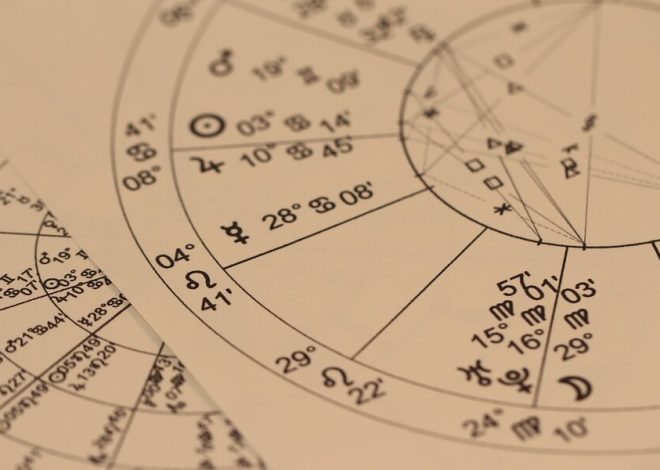
How to Make Aesthetic Book Covers?
So, you’ve poured your heart and soul into writing a fantastic novel. It’s a literary masterpiece, and you can’t wait to share it with the world. But let’s be real—first impressions matter. And the first thing your readers will judge is your book’s cover. So by now, you’re probably wondering how to make aesthetic book covers.
If you want to make your novel stand out and scream, “I’m awesome!” you need an aesthetic book cover. In this guide, I’ll show you how to create the most eye-catching, Instagram-worthy, and Pinterest-popping book covers. Buckle up, because it’s time to get stylish with your literary wardrobe.
Channel Your Inner Picasso: The Aesthetic Book Covers Vision
Creating aesthetic book covers starts with a vision. Picture your book as a person at a high-fashion photoshoot. What’s the vibe? Vintage, minimalistic, dark and moody, or bursting with vibrant colors? The aesthetic vibe you choose will set the stage for your design.
Now, you might be thinking, “Why does the vibe even matter? Can’t I just slap something together and call it a day?”
Well, here’s the thing, my fellow wordsmiths: Your book’s cover is like the first impression you make on a blind date. If it looks like a hot mess, you’re not getting a second chance. Whether you’re a DIY enthusiast or you’ve enlisted the help of a designer, nailing that aesthetic vibe is crucial.
Imagine going to a fancy restaurant with a friend who’s dressed to the nines, and you’re there in your sweatpants. Your friend’s going to steal all the attention, right? That’s what a fabulous book cover does. It makes your book stand out in the crowded world of literature.
In the end, your book’s aesthetic cover is the window to your story’s soul. It entices readers, inviting them into the world you’ve created. So, don’t skimp on the aesthetic vibes.
Types of Vibes
- The Vintage Vibe: Old is the New Bold
If your book is the classic diva of the literary world, vintage vibes are your best friend. Think sepia tones, faded edges, and fonts that scream “retro chic.” It’s like your book is wearing a flapper dress and doing the Charleston.
- Minimalism: Less is More, Baby
A clean background, fonts that are sleeker than a sports car, and a color palette that’s as minimalist as a tiny house. Your book’s looking so sharp it could cut through paper.
- Dark and Moody: Brooding and Mysterious
Is your book a bit of a loner, always hanging out in the shadowy corners of the library? Dark and moody is the way to go. Rich, deep colors like midnight blues and forest greens, with fonts that are as mysterious as Sherlock Holmes. Your book’s got that enigmatic allure.
- Bursting with Vibrant Colors: The Party Starter
If your book is the life of the literary party, go big with vibrant colors. Think neon pinks, electric blues, and fonts that pop like confetti. Your book’s not just the center of attention; it’s the whole party!
Other Useful Tips
Colors play a massive role in aesthetics. Research color psychology to select the right hues for your book cover. For instance, blues and greens convey calm, while reds and oranges bring energy. If your novel is a romance, pastel pinks and soft purples are your best friends.
Choose your fonts carefully. They should align with the aesthetic vibe you’re going for. Cursive for romance, bold and edgy for thrillers, and a whimsical font for fantasy. Be sure your title is legible, though – no one wants to guess what your book is called.
While you can use stock photos, consider adding a personal touch with original artwork or photos. This gives your cover an authentic, unique feel. Just remember to ensure the images align with your book’s theme and mood.
Also, consider where your book will live. Digital and print covers have different requirements. Ensure your book cover looks stunning, no matter where it’s seen.
DIY or Hire a Pro
You’ve got two choices: DIY or hire a professional designer. If you’re feeling artsy, there are plenty of user-friendly design tools out there. Canva and Adobe Spark are great places to start. But if you want a showstopper, invest in a professional. They’ve got the skills and experience to make your vision come to life.
Canva – Where Magic Happens
Canva’s like a DIYer’s playground. It’s so user-friendly that even your grandma can create aesthetic book covers. You can choose from ready-made templates, play around with fonts and colors, and upload your own photos. It’s like arts and crafts for grown-ups, and the best part? No glitter to clean up.
Pros:
- It’s user-friendly and perfect for beginners.
- You don’t need to be a design guru to make something pretty.
- The template library is vast, covering various styles.
- The basic version is free (though they do have a pro version for extra perks).
Cons:
- Since it’s user-friendly, you might run into some limitations for complex designs.
- Not all elements and images are free. Some require a small fee.
- While it’s fun, it might not offer the same level of customization as professional graphic design software.
Adobe Spark – The Next Level
If Canva is the appetizer, Adobe Spark is the three-course meal of DIY design. It’s got a bit of a learning curve, but it offers more advanced features. It’s like moving from finger painting to canvas and oil colors. You can create beautiful visuals, animated videos, and social graphics. Your book cover could be a masterpiece!
Pros:
- Offers a wide range of design possibilities, from visual storytelling to custom sizes.
- User-friendly and perfect for those who want a bit more than just the basics.
- Free to use, with optional premium features.
Cons:
- Might have a steeper learning curve compared to super-user-friendly tools like Canva.
- While it’s versatile, it may not offer as much advanced control as professional design software like Adobe Creative Cloud.
Hire a Pro: The Glam Squad
Now, let’s talk about hiring a professional designer. It’s like calling in the glam squad before a big event. If you want a showstopper, these folks are your ticket to the red carpet.
Professional designers are like wizards with Photoshop wands. They’ve got the skills and the artistic vision to bring your book cover to life. They can take your vague ideas and turn them into a work of art. If you want your book cover to look so good it could make a unicorn jealous, these are the folks to call.
Pros:
- You get a professionally designed cover that can make your book pop.
- It takes the design burden off your shoulders, leaving you with more time for writing.
- Collaboration allows for a cover that’s perfectly aligned with your book’s essence.
Cons:
- It comes at a cost, and high-quality designers can be pricey.
- Effective communication is essential to ensuring the designer captures your vision accurately.
Online Sage‘s recommendation is to hire the designers from GetCovers. They really take care of your vision and deliver a high-quality product at $30 or even less.
The Pros and Cons Showdown
DIY is cost-effective and can be fun if you’re a creative soul. But you might end up with a design that looks more like a kindergarten project than a book cover. For more info, read why authors shouldn’t design their own book covers.
With a pro, you’ll have a professionally designed cover that’ll make your book pop. But it can be a tad pricey. And remember, you’ll need to communicate your vision effectively to ensure they hit the nail on the head.
So, here’s the deal: if you’re ready to unleash your inner artist, dive into the DIY realm with Canva or Adobe Spark. But be prepared to put in some time and effort.
However, if you want aesthetic book covers that are not just an outfit but a whole fashion line, go ahead and invest in a professional designer. They will make your book appear so attractive that it could walk the catwalk with supermodels.
Conclusion
Ultimately, whether you DIY or hire a pro, the most important thing is to ensure your book cover is a head-turner. After all, your book deserves a cover that’s as captivating as the story inside. So, choose your path, and let the design adventure begin!
Creating aesthetic book covers is part art, part science, and a whole lot of fun. Once your cover is ready, you’ll be itching to show it off to the world. So go ahead and dazzle your readers with a cover that’s not just a book cover but a piece of art.







